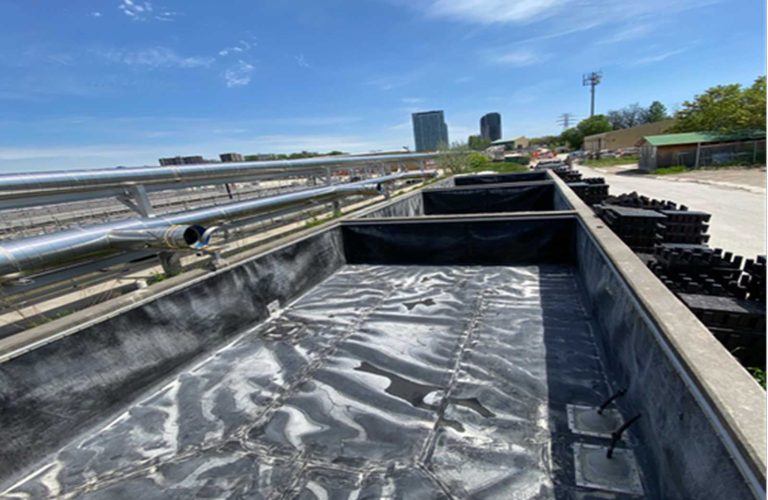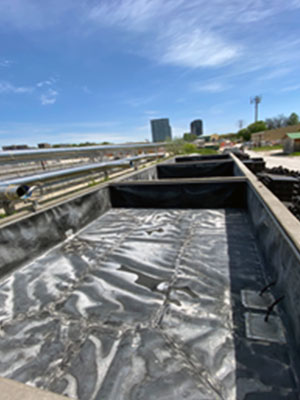Providing Superior Flexibility In all Climates
Layfield’s GeoFlex® uses next-generation catalyst technology optimized to deliver flexibility with UV and chlorine resistance. GeoFlex® is a highly flexible lining material that makes detail work, such as building tanks, attaching to structures, or creating corners, easy.
In addition to flexibility, GeoFlex® has excellent resistance to both Slow Crack Growth (SCG) and Environmental Stress Cracking (ESCR) and is suitable for water and water-based effluent storage. Exhibiting high impact strength and puncture resistance, this product has outstanding resistance to low temperatures. This geomembrane also meets GRI GM-17 requirements and is suitable for various primary and secondary containment applications.
Why Is GeoFlex Unique?
Enhanced Flexibility
GeoFlex® exhibits a much higher Tensile Yield Elongation than standard LLDPE geomembranes, displaying increased forgiveness in folds, bends, and creases.
Unique Cold Temperature Capabilities
Specially formulated GeoFlex® geomembranes have the ability to withstand temperatures well below freezing.
Ability To Be Factory Fabricated Up To 60 Mil Thick
Due to its highly flexible nature, this innovative geomembrane can be factory fabricated using up to 60 mil thick material making it a stand-out in our industry.
Additional Features
- Has excellent chlorine resistance
- Excellent resistance to both SCG and ESCR
- Exhibits high impact strength and puncture resistance
- Outstanding resistance to low temperatures
Product Details
Layfield’s GeoFlex™ uses next-generation catalyst technology optimized to deliver flexibility, elongation, and cold temperature resistance.
Downloads
Product Specifications
Resources
Explore the resources available to help you acquire additional knowledge on our products. If you cannot find what you are looking for, we are here to help.
Case Studies
Discover a wide range of completed Layfield projects in various applications worldwide.
Webinars
Our Technical Services Team continuously creates and presents webinars and lunch presentations to better educate our clients. We would be happy to provide you and your group with a customized presentation based on your specific needs. We are also pleased to provide a series of pre-recorded webinars curated for this product group and shown below.
Next Generation Geomembranes: Introducing HeatGard, GeoFlex, and VaporFlex
Join Layfield’s Rohit Sati, Technical Product Manager – Containment and Enclosure Systems, as he discusses Layfield’s next-generation geomembranes, developed with the highest quality resins and additives to withstand the most challenging environments. Our webinar will provide insight into the key performance properties and suitable applications for these materials.
Advanced Geosynthetics for Landfill and Waste Applications
Join Layfield Geosynthetics Rohit Sati, Technical Services Manager — Containment and Enclosure Systems, and Brian Fraser, Vice President – Strategic Business Development, for an educational webinar outlining new industry innovations with geomembranes and geocomposites in waste containment applications. This webinar features the following topics: New Bi-Modal Heatgard® HDPE Geomembranes, HydraNet™ Geocomposite Drainage Products, Geovolt® Conductive Composite for Electrical Leak Detection, and GeoFlex® Geomembranes.

